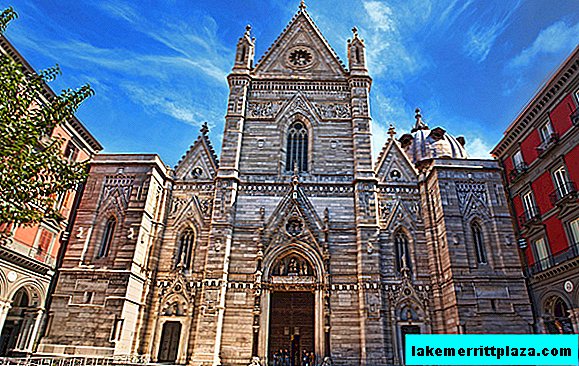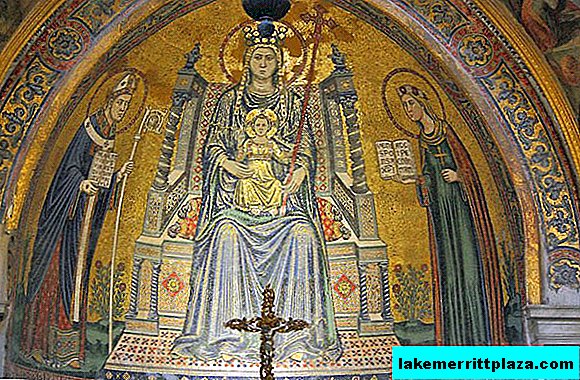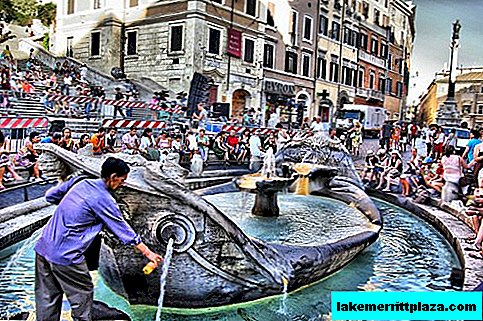The Cathedral of St. Januarius (Duomo di San Gennaro) is the central attraction of Naples. Its modern name is the Cathedral of the Assumption of St. Mary (Duomo di Santa Maria Assunta). It is interesting as the brightest example of Catholic architecture. Via Duomo, on which it is located, is itself a tourist attraction. This is the historical center of Naples, and just a walk along the local alleys is an adventure.
Story

The construction of the temple began in the 13th century, on the basis of the oldest basilicas, the remains of which are still not completely destroyed. Later, the Cathedral of St. Januarius was rebuilt and updated until it acquired its majestic and slightly gloomy Gothic appearance. The construction began under Charles I, and was completed only with his grandson Robert, already in the 14th century.
The chapel and basilica of different times organically coexist in the building. The building was updated several times, the last reconstruction took place in 1974, but the church does not lose its integrity and harmony. Sharp peaks directed to the sky distract from the earth and make you think about the eternal.
Interior
The Cathedral of St. Januarius, like any ancient monument, is a whole cultural layer of Italian history. In the external appearance of the building, a mixture of various architectural trends is felt, but Gothic dominates. The vaults are adorned with works by eminent masters of painting and mosaics, and one of the chapels, Minutolo, became the subject of description in Giovanni Boccaccio's Decameron.

Entrance to the Cathedral of St. Januar is accessible to all. The exception is the baptismal site of St. John (San Giovanni in Fonte). This is the most ancient part of the temple, a medieval architectural monument. According to some documents, the baptismal was built at the beginning of a new era, in 343, under Constantine I the Great. This makes it, no more, no less - the oldest church building in the entire Western world. On the vaults of the baptismal site you can still see mosaics of the 4th century.

The cathedral of St. Januarius was adorned by the great Italian masters of the Renaissance - Perugino (Pietro Perugino), Giorgio Vasari (Giorgio Vasari). In one of the chapels, a mosaic is preserved, which is called "Madonna and Child on the Throne, from St. Januarius and St. Restitution ", the creation of which is celebrated in 1322. You do not need to be a believer to feel the touch of subtle spiritual matters, being in such a place. Definitely, lovers of beauty will appreciate the fantastic frescoes on the domes inside the cathedral.
Hidden treasures

The main chapel of the cathedral is called the royal chapel “Treasures of St. Januarius” (Reale cappella del tesoro di San Gennaro). Such a name is justified, the recognized geniuses of the Italian Renaissance were engaged in the decoration of the chapel. Painted dome by Domenichino, frescoes by Giovanni Lanfranco and José de Ribera. However, precious church relics remain in the spotlight, in other words, Treasures of San Gennaro.

One of the central exhibits of the treasury of the patron saint of Naples is the golden bust of Januaria, made by three French masters in the 14th century. Put in a ceremonial outfit, the face of a martyr is actually a relic, that is, a container for relics. In the head of the bust are the remains of the skull of St. Januarius. In the 18th century, the precious ark was crowned with a headdress embroidered with diamonds, emeralds and rubies. Towards the end of the same century, San Gennaro received another offering - a necklace made of 13 gold chains and 4 crosses, inlaid with precious stones.

Each of the crosses is a royal gift from the families of the ruling monarchs. Such reverence for Saint Januarius is by no means accidental; in the 16th century Naples was in decline, after a protracted war with France and Spain. In the 17th century, a powerful eruption of Vesuvius was added to the misfortunes, which threatened to flood the city with hot lava. Sincere faith in Januaria and a happy combination of circumstances have protected the inhabitants of Naples from disaster. Since then, his authority has been unshakable for any Catholic and Neapolitan. And the treasury of the saint is growing every year, getting at his disposal new precious items of church utensils and jewelry.
Another relic that has been kept for centuries by the Cathedral of St. Januarius is a vessel with its blood. It is especially worthwhile to look into the temple for those who find themselves in the city on the first Saturday of May, September 19 or December 16 - these are holidays, when the sacred vessel is shown to pilgrims. In an unknown way, the blood boils with it and fills the entire capacity with itself. Citizens in Naples believe that if a miracle does not happen, then the city will be in trouble and misfortune. One such case was the 1979 earthquake, which claimed thousands of lives in Naples.
Interesting Facts
Another noteworthy fact is associated with the famous miracle of "boiling blood." Of course, the century of scientific progress does not disregard such phenomena. In 2005, the 19th of September celebration in Naples was greatly ruined by the publication of Margarita Hack's research. Professor Hack, along with his comrades from the Italian Association for the Study of Paranormal Phenomena, stated that the “miracle of blood” is a falsification, and it has been happening for centuries in a row.

Researchers say that in the vessel there is no blood at all, but a chemical substance based on iron (water-containing iron oxide - FeO (OH). It is similar in color to blood, but at rest it has a gel-like consistency. Once the vessel is shaken, the gel liquefies and how It would "come to life", striking the audience with an imaginary miracle. The Church in every possible way criticized the professors and the results of her research. But even such revealing sensations do not detract from the value of the temple.
How to get there
The road to the cathedral runs along the historic streets of Naples.
- Address: Via Duomo, 149, telephone +39 081 421609.
The treasures of St. Januarius are kept in a museum located at the church.
- Opening hours: from 9:00 to 17:00, on Easter: from 9:00 to 14:00;
- The total cost of the ticket is 6 euros, preferential: from 3.5 to 4.8 euros, depending on the age of the visitor;
- Phone for information and booking tickets: +39 081294980;
- Official website: www.museosangennaro.it








